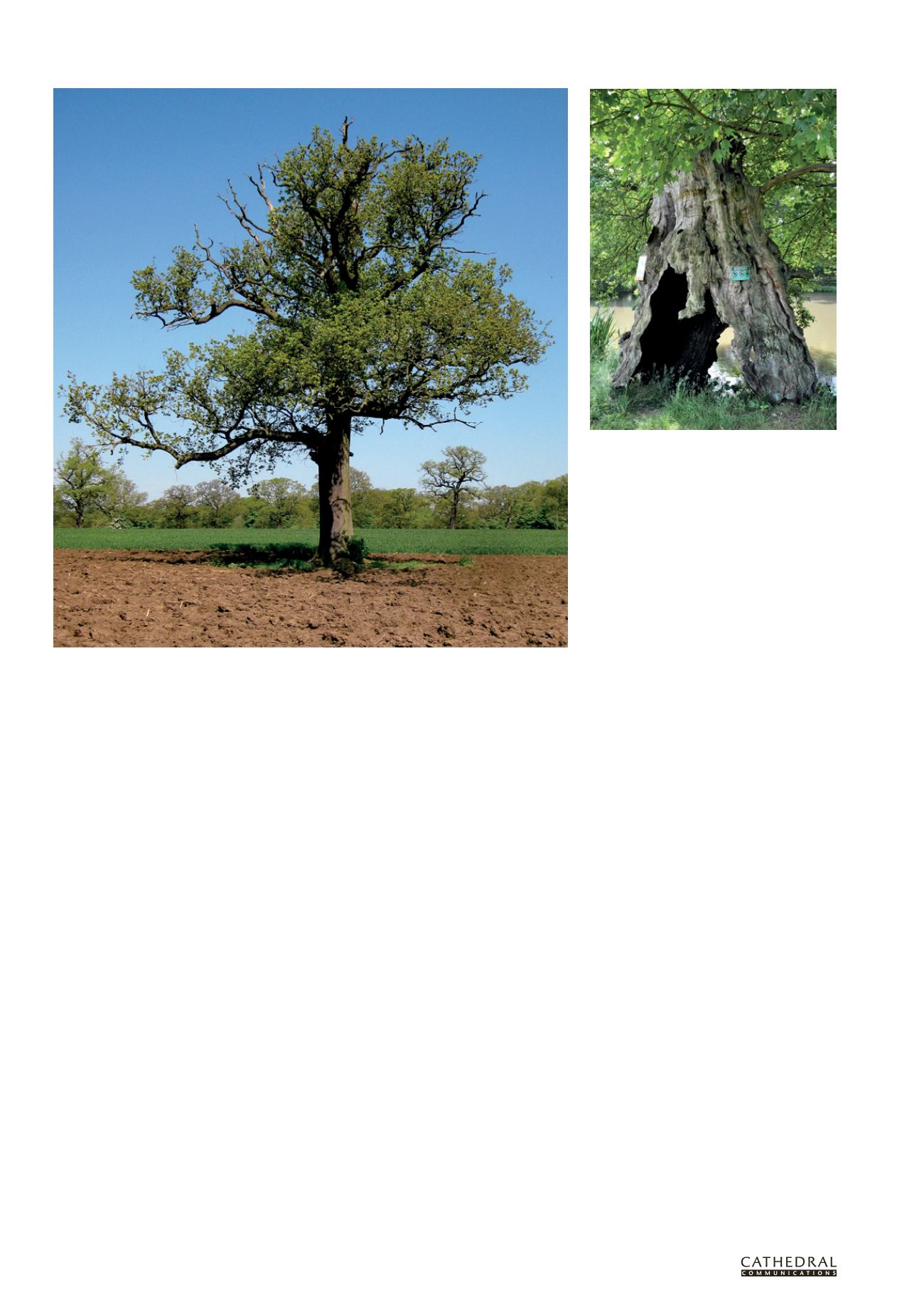
1 2 8
T H E B U I L D I N G C O N S E R VAT I O N D I R E C T O R Y 2 0 1 4
T W E N T Y F I R S T E D I T I O N
3.4
STRUCTURE & FABRIC :
EX TERNAL WORKS
ecological resource, this was not always the
case, and the blight of tidiness curses many
historic parklands. Here unsightly growth
forms and ‘dying’ trees are removed via
overzealous tree maintenance regimes which
often damage the trees themselves as well as
removing vital ecological niches.
Invertebrates associated with dead
and decaying wood are generally of a high
conservation value. Many are local or
rare and are declining in both Britain and
Europe. Dead wood occurs in a wide range
of forms, each supporting its own distinctive
assemblage of invertebrates and the successful
conservation of the biodiversity supported
by ancient wood pasture is dependent on the
maintenance of a wide range of wood decay
situations at site level.
The insects associated with ancient trees
commonly have complex life cycles. Different
stages of the life cycle may have quite different
habitat requirements. Many species that
require dead wood habitats in one stage of
their life cycle rely on nectar sources for food
in another stage. Open structured flowers
such as those of hawthorn, umbellifers and
composites are particularly important, and
the maintenance of scrub and other areas
with tall flowering plants can make a very
significant contribution to the successful
function of a diverse invertebrate community
within wood pasture.
MANAGING HISTORIC TREES
FOR THE FUTURE
Prevention of ill-health within existing trees
and ensuring future replenishment and
enhancement of tree stocks should be key
priorities within the landscape to prevent any
further loss of these valuable assets to the
wider historic environment. Production of
conservation management plans and parkland
plans by landscape conservation specialists
can help to achieve appropriate tree and
woodland management for future generations.
In terms of tree management, safety is
always of paramount importance due to the
Tree showing signs of decline following ploughing almost up to the trunk
A veteran tree at Ampthill Great Park in Ampthill,
Bedfordshire
air of antiquity to newly created landscapes.
It is probably this retention of existing trees
that has resulted in historic parks and gardens
supporting a disproportionate number of
veteran and ancient trees. The popularity of
the Picturesque landscape design movement
has almost certainly contributed to the fact
that Britain has more ancient trees than most
other countries in northern Europe.
An ancient tree is one that has passed
through full maturity but only achieves
‘veteran’ status as its structure changes to
reflect its age, limbs are shed and decay sets
in. The crown of an ancient tree will have
reduced in size from its full extent as the tree
sheds redundant parts and accumulates dead
wood. This reduction in crown size is a process
known as crown retrenchment. As a tree ages
it is progressively colonised by fungi that can
alter the structure and condition of its wood.
Natural damage and shedding of limbs and
branches can, through the action of wood
decay fungi, lead to trunk hollowing, branch
cavities, live stubs, shattered branch ends, loose
bark and sap runs. These ‘veteran’ features
provide highly specialised habitat niches for a
range of organisms. Many of these organisms
are characterised as having extremely limited
powers of dispersal. Continuity of habitat
and lack of disturbance are therefore very
important factors in determining the ecological
resource that these trees provide.
Although these veteranised features are
now recognised as providing an important
specimens, hedgerow trees, clumps and larger
woodland areas contribute to the inclusion
of a landscape in the register, as they will
usually have formed part of the original design
intention of the landscape designer.
TREES AND BIODIVERSITY
Trees support, and are supported by, an
extraordinary range of species. Their
interactions with these species are highly
complex and much is still to be learned.
However, it is worth considering trees as
ecosystems in their own right operating
within other ecosystems. The ecological
resources provided by a mature tree are
extensive and range from large cavities
in the tree trunk, which provide roosting
opportunities for bats; to their vegetative
growth, which provides a food source for a
plethora of birds, mammals and invertebrates;
and their root networks, which support
diverse communities of symbiotic fungi.
The ecological resource provided by a
tree depends to a large degree on its setting.
Open grown trees are able to realise their full
leaf potential and can therefore maximise
their pollen and fruit production, providing
a huge food resource for a large array of
species. Woodland trees exert a large degree
of influence on their surroundings, often
creating shady and humid environments that
are vital for many species.
Virtually every historic park made use of
existing trees, which were retained to give an


